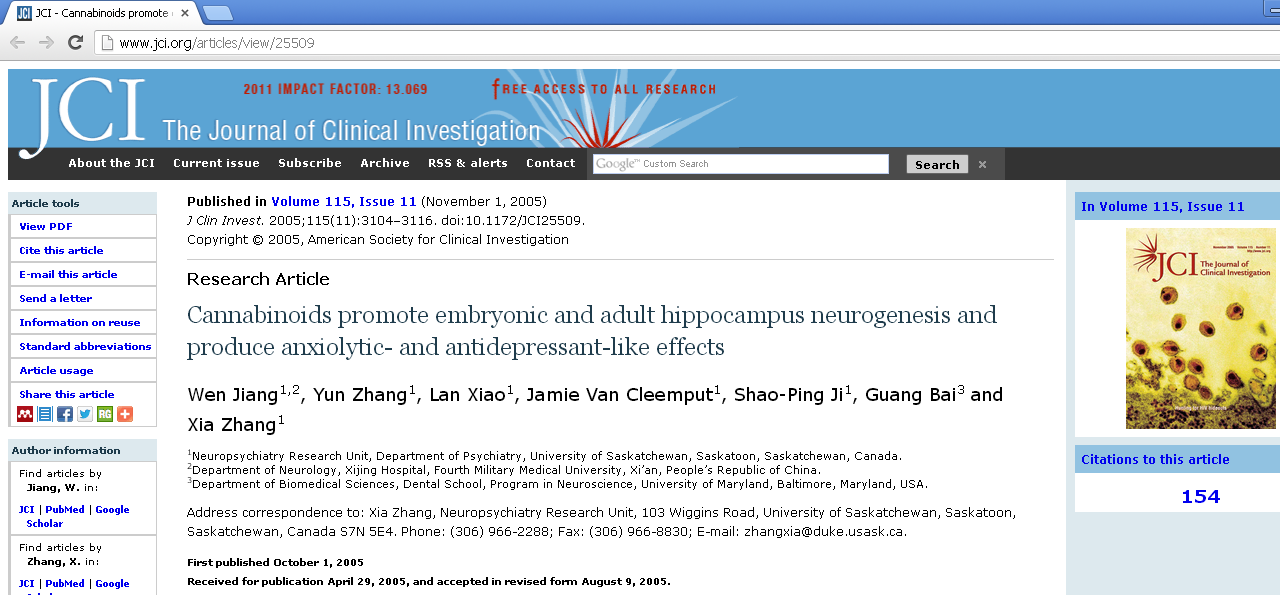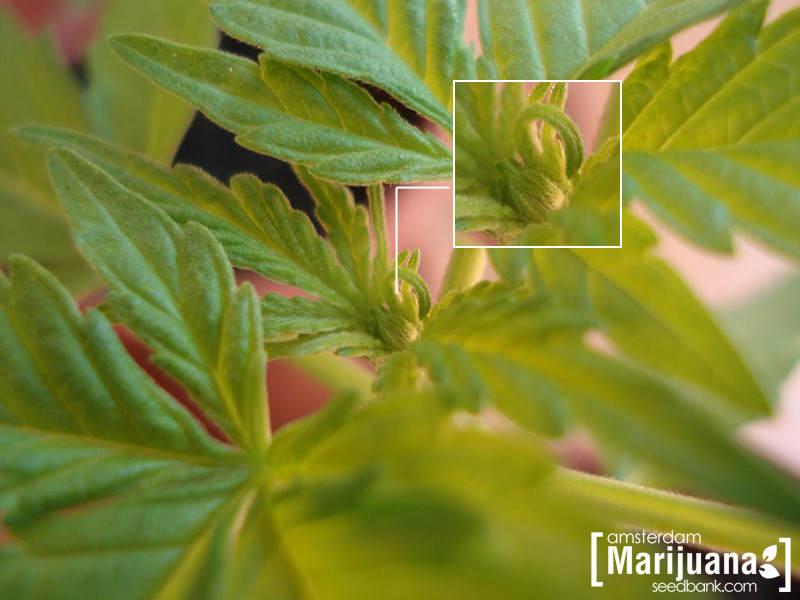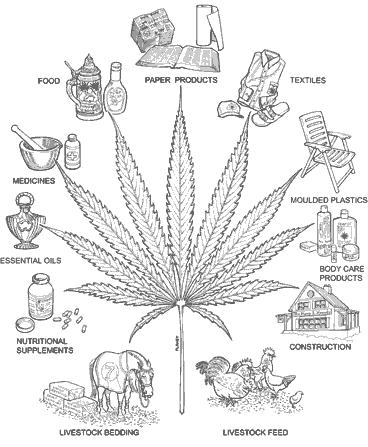|
Di seguito gli interventi pubblicati in questa sezione, in ordine cronologico.
The Zeitgeist Movement Global and its Chapters rarely, if ever, engage in any form of public solicitation for money. There are no "open" donation pools as with many organizations. This is deliberate. The ethic promoted is in the interest of utilizing people's time and energy, not their money. It is generally expected that those who are facilitating their Chapter and related Projects/Events are willing to allow for the inevitable financial losses they incur for the greater good. (For example, Peter Joseph, the founder of The Movement is the sole financier of the Global Chapter website, its Administration, along with the core Zeitgeist Movement "Main" events, such as Zeitgeist Day, Zeitgeist Media Festival, etc)
The only exception is the universal allowance of Official Chapters to generate and distribution a Shirt or similar supporting articles to help cover the costs of their website and/or related expenses. This is acceptable for it is also a culturally supported means of communication.

Any donations sought otherwise can only be time and project specific. For example, if a Town-hall requires $200 to obtain a venue, a trackable "Chip'in" Widget or the like may be setup in an effort to meet that exact value.
Likewise, events that require ticket sales must reflect a break even scenario within a certain threshold.
For instance, if the cost to rent a venue is $200 and the venue holds 50 people, the ticket price would be of $4.00 assuming full capacity will be met.
The integrity of The Movement and hence its members and chapters is reflected, in part, by the explicit lack of any financial gain inherent in the exercise. More importantly, it is also recognized that money is the most prominent corrupting factor in the world today, sociologically, and without that possible abusive propensity/interference, The Zeitgeist Movement will only strengthen these facts in its focus.
Source: http://thezeitgeistmovement.com
"Zeitgeist Day", or Zday for short, is an annual, global event day which occurs in the middle of March, each year. The goal is to increase public awareness of The Zeitgeist Movement.

The first official "Zday" took place in 2009. These events were well documented by news agencies across the world, including the New York Times in America. An archive list of those events can be found on the zdayglobal.org site.
On the 2010 Zday there were 330 sympathetic events occurred in over 70 countries worldwide. These events were well documented by news agencies across the world, including the Huffington Post in America. More press/info can be found at zday2010.org
A Zeitgeist Day Event can take many forms, ranging from a simple showing of DVD media, to full lectures, and to interactive question-and-answer events with Chapter Organizers in various regions.
Recognizing the power of art and media to help change the world, "The Zeitgeist Media Festival" is an annual world-wide arts festival that occurs late each summer.

The idea is to engage the artistic community and their power to changes values. It proposes that needed changes in the structural/economic workings of society can only manifest in tandem with a personal/social transformation of values in each of us. While intellectual knowledge serves its role of showing the path, many in the world follow their feelings- not the knowledge. The Zeitgeist Media Festival works to bridge those levels, while also illuminating a focus where changing and improving the world is no longer considered a fringe, suspect or ever dangerous pursuit - but rather the highest and most honorable level of personal/social integrity we have.
Participating in The Zeitgeist Media Festival does not mean each event must meet some strict requirement of focus or even be dedicated to the tenets of The Movement. However, participation does require that each act understand and agree with a general train of thought with respect to human and social sustainability and the self-evident factors that comprise a Global View of Earth as a single system and how that relates to our Human Family.
The Zeitgeist Media Festival also globally works with local Food Drives to help the many homeless and suffering directly.
Source: http://thezeitgeistmovement.com
No. While the word "Zeitgeist" is also associated with Peter Joseph's film series, "Zeitgeist: The Movie", "Zeitgeist: Addendum" and "Zeitgeist: Moving Forward", the film series based content isn't to be confused with the tenets of "The Zeitgeist Movement" here. Rather, the films were mere inspirations for "The Zeitgeist Movement" due to their popularity and overall message of seeking truth, peace, and sustainability in society.

The term "Zeitgeist" is defined as the ‘The General intellectual, moral, and cultural climate of an era." The Term "movement" very simply implies "motion" and change, Therefore The Zeitgeist Movement is thus an organization which urges change in the dominant intellectual, moral and cultural climate of the time.
The Movement is not about Comparative Religion, False-Flag Terrorism, Economic Hit-men, Fractional Reserve Banking or the Federal Reserve. The films are unrelated to The Movement in detail and are personal expressions of Peter Joseph. There is often some confusion in this regard and in the most extreme cases some people have the knee-jerk reaction that TZM support's forbidden "Conspiracy Theories" or is "Anti-Religious" or the like. This type of rhetoric tends to be of a pejorative/insulting nature, used in the context of dismissal of The Movement by an erroneous and "taboo" external association. The fact is, there is no direct association whatsoever.
If you are not familiar with what TZM actually is, please review our extensive literature and video/lecture materials on this website.
Source: thezeitgeistmovement.com
Physicist Roger Penrose, of the University of Oxford, and anesthesiologist Stuart Hameroff, of the University of Arizona, propose that the brain acts as a quantum computer - a computational machine that makes use of quantum mechanical phenomena (like the ability of particles to be in two places at once) to perform complex calculations. In the brain, fibers inside neurons could form the basic units of quantum computation, Penrose and Hameroff explained at the Global Future 2045 International Congress, a futuristic conference held here June 15-16.
The idea is appealing, because neuroscience, so far, has no satisfactory explanation for consciousness - the state of being self-aware and having sensory experiences and thoughts. But many scientists are skeptical, citing a lack of experimental evidence for the idea.

The Orch OR model
Penrose and Hameroff developed their ideas independently, but collaborated in the early 1990s to develop what they call the Orchestrated Objective Reduction (Orch OR) model.
Penrose's work rests on an interpretation of the mathematician Kurt Godel's incompleteness theorem, which states that certain results cannot be proven by a computer algorithm. Penrose argues that human mathematicians are capable of proving so-called "Godel-unprovable" results, and therefore human brains cannot be described as typical computers. Instead, he says, to achieve these higher abilities, brain processes must rely on quantum mechanics.
But Penrose's theory didn't explain how this quantum computing occurred inside actual brains, just that the phenomenon would be needed to solve certain mathematical equations. Hameroff read Penrose's work and suggested small fibrous structures that give cells their structural support - known as microtubules - might be capable of carrying out quantum computations.
Microtubules are made up of units of the protein tubulin, which contains regions where electrons are swirling around very close to each other. Hameroff proposed that these electrons could become "quantum entangled," a state in which two particles retain a connection, and an action performed on one affects the other, even when the two are separated by a distance.
In the Orch OR model, the mathematical probabilities that describe the quantum states of these entangled electrons in microtubules become unstable in space-time. These mathematical probabilities are called wave functions, and in this scenario they collapse, moving from a state of probability to a specific actuality. In this state, the microtubules in one neuron could be linked to those in other neurons via electrical connections known as gap junctions. These junctions would allow the electrons to "tunnel" to other regions of the brain, resulting in waves of neural activity that are perceived as conscious experience.
"Penrose had a mechanism for consciousness, and I had a structure," Hameroff told LiveScience.
Problems with the model
Interesting as it sounds, the Orch OR model has not been tested experimentally, and many scientists reject it.
Quantum computers - computers that take advantage of quantum mechanical effects to achieve extremely speedy calculations - have been theorized, but only one (built by the company D-Wave) is commercially available, and whether it's a true quantum computer is debated. Such computers would be extremely sensitive to perturbations in a system, which scientists refer to as "noise." In order to minimize noise, it's important to isolate the system and keep it very cold (because heat causes particles to speed up and generate noise).
Building quantum computers is challenging even under carefully controlled conditions. "This paints a desolate picture for quantum computation inside the wet and warm brain," Christof Koch and Klaus Hepp, of the University of Zurich, Switzerland, wrote in an essay published in 2006 in the journal Nature.
Another problem with the model has to do with the timescales involved in the quantum computation. MIT physicist Max Tegmark has done calculations of quantum effects in the brain, finding that quantum states in the brain last far too short a time to lead to meaningful brain processing. Tegmark called the Orch OR model vague, saying the only numbers he's seen for more concrete models are way off.
"Many people seem to feel that consciousness is a mystery and quantum mechanics is a mystery, so they must be related," Tegmark told LiveScience.
The Orch OR model draws criticism from neuroscientists as well. The model holds that quantum fluctuations inside microtubules produce consciousness. But microtubules are also found in plant cells, said theoretical neuroscientist Bernard Baars, CEO of the nonprofit Society for Mind-Brain Sciences in Falls Church, VA., who added, "plants, to the best of our knowledge, are not conscious."
These criticisms do not rule out quantum consciousness in principle, but without experimental evidence, many scientists remain unconvinced.
"If somebody comes up with just one single experiment," to demonstrate quantum consciousness, Baars said, "I will drop all my skepticism."
Source: sott.net - Author: Tanya Lewis
Solve our daily updated chess puzzles with three levels of difficulty.

To enter the solution, click on the desired piece and drag it to the target square.
In some puzzles you have to enter a series of moves. You like chess puzzles?
The study was published in the Cambridge Journals and it can be found here.

During the study researchers examined the effect of CBD on the hippocampus part of the brain; the hippocampus is a portion of the brain which plays a key role in regulating emotion and memory – it’s the only part of the brain that can grow after someone is an adult.

According to researchers, this study (and those like it) opens the door for cannabidiol being used to “manage psychiatric symptoms in disorders such as ageing, stress and neuroinflammation.”

This study is one of the most comprehensive of its type, and confirms a past study from 2005 that found similar results (which can be found in its entirety by clicking here).
Source: TheJointBlog.com via TheWeedBlog.com
These two species of cannabis are widely cultivated around the world for various recreational and medicinal purposes.

Marijuana and Cannabinoids
The distinct shape of the Cannabis leaf (pictured) is recognized around the world
Marijuana elicits a number of psychoactive and physiological effects on its user, all of which can be attributed to a group of chemicals known as cannabinoids.
The cannabinoids found in plants are sometimes referred to as phytocannabinoids (‘phyto’ = plant) and the female cannabis plant is known to produce over 60 unique cannabinoids when flowering. These flowers (or buds) are the only part of the plant that contain a high concentration of cannabinoids and are generally the only part that is cultivated for use.
Among these cannabinoids are two major constituents of marijuana – tetrahydrocannabinol (THC) and cannabidiol (CBD) – both of which have been thoroughly studied. THC has been the most popularized phytocannabinoid due to its well-known psychoactive effects, which have been attributed to the “high” that marijuana users experience.
Marijuana Intake
Cannabinoids must enter the blood stream to elicit their effects within the human body.
The most common method of intake is by smoking, as the cannabinoids in marijuana can only be released under certain conditions such as high temperatures. When marijuana smoke is inhaled, cannabinoids cross from the lungs to the blood stream within a matter of seconds. Once in the blood stream, cannabinoids enter circulation and begin to elicit their effects by binding to receptors found in various parts of the body.
Marijuana can also be prepared for ingestion, which results in a weaker but longer release of cannabinoids as absorption occurs in the stomach instead of the lungs.
Cannabinoid Receptors (CB1 and CB2)
There are two types of receptors in the human body that cannabinoids can bind to: CB1 and CB2. These receptors exist as part of the endocannabinoid system – the body’s natural cannabinoid system – that includes naturally occurring cannabinoids (endocannabinoids) such as anandamide and 2-arachidonoylglycerol (2-AG).
Phytocannabinoids – such as THC and CBD – are able to mimic the actions of endocannabinoids within the body by binding to the same receptors as they do.
THC has a higher affinity for CB1 receptors, which are most prominent in the brain and spinal cord but are also found in peripheral systems and organs such as the liver, GI tract, and thyroid glands. CB2 receptors are expressed almost exclusively in the immune system but have recently been identified in other parts of the body as well.
Source: truthonpot.com
In fact, early humans depended on hemp plants in order to fulfill an array of basic necessities such as clothes, food, fabrics, rope, paper and more. Even today, hemp is grown and cultivated in over 30 countries for much of the same uses that early human civilizations relied on the hemp plant for.

Cannabis sativa
The term ‘hemp’ refers to distinct strains of the Cannabis sativa plant that contain low levels of THC – usually less than 0.3%. Of the 2000 known varieties of cannabis plants, approximately 90% contain trace levels of THC and are useful only for their hemp seeds and fibers. The minimal levels of THC render hemp plants useless for the psychoactive and recreational purposes that cannabis plants are commonly associated with.
Hemp is highly regarded as an agricultural crop for a number of reasons. In addition to its wide range of applications from food to clothes, hemp is one of the fastest growing biomasses known – capable of producing up to 25 tonnes of dry matter per hectare per year. Hemp plants are also environmentally friendly, requiring no herbicides and few pesticides. As well, hemp is a very robust crop and can be grown in diverse soil and climate conditions.
The History of Hemp
Archaeological evidence of hemp use dates back to the Neolithic Age in China, where imprints of hemp fiber were discovered on Yangshao culture pottery from the 5th century B.C. Ancient Chinese civilizations would later use hemp to make clothes, shoes, ropes and an early form of paper.
Eventually, the use of hemp spread to other parts of the developing world. In the Princeton University Press publication entitled Prehistoric Textiles (1992), textile expert Elizabeth Wayland Barber summarizes the historical evidence that Cannabis sativa, “grew and was known in the Neolithic period all across the northern latitudes, from Europe (Germany, Switzerland, Austria, Romania, the Ukraine) to East Asia (Tibet and China),” but, “textile use of Cannabis sativa does not surface for certain in the West until relatively late, namely the Iron Age.”
Hemp was grown and cultivated in Europe mainly for its fibers, and was used for ropes on many ships, including those of Christopher Columbus. The famous explorer was known to carry hempseed on his ships in case of shipwreck, in order to grow raw materials and for use as a food source.
Early settlers in North America brought hemp with them and must-grow laws were eventually enacted that forced all farmers to grow the crop. In fact, the first laws in America to ever address the cannabis plant was a must-grow law enacted in 1619, which forced all settlers in Jamestown Colony, Virginia to grow the plant, since it was such an essential agricultural crop at the time. Similar laws were put in place over the next 200 years, during which time hemp even became a legal tender crop.
Hemp in the US
Hemp was highly regarded by many historic Americans of the time. George Washington grew hemp at Mount Vernon as one of his three primary crops and Benjamin Franklin started one of the first American paper mills by making paper exclusively out of cannabis hemp. Domestic production of hemp flourished until sometime after the Civil War when it began to be replaced by the production of newer materials that were less labor intensive, such as cotton.
The hemp crop received renewed interest during World War II following the 1942 production of a short film entitled Hemp for Victory, which promoted hemp as a necessary crop to win the war. Hemp was used extensively during the war to create textiles such as uniforms, canvas and rope.
Modern Day Uses
Hemp is grown in countries all over the world and is used for a wide array of industrial purposes, including paper, textiles, clothing, biodegradable plastics, construction, body products, health food and bio-fuel.
In 1938, Popular Mechanics Magazine published an article about hemp entitled The New Billion Dollar Crop, which described the usefulness of hemp in producing over 25,000 different products, ranging from dynamite to cellophane. Oddly enough, free production of hemp had already been made illegal a year earlier through the Marijuana Tax Act of 1937.
To this day, hemp remains illegal to grow under U.S. federal law, due to its inherent similarity to the marijuana plant. However, U.S. retailers and manufacturers import approximately 1.9 million pounds of hemp fiber, 450,000 pounds of hemp seeds, and 331 pounds of hempseed oil annually from Canada and other countries that regulate the farming of hemp.
Source: truthonpot.com
Many also believe that the smoke from marijuana poses similar health risks as tobacco smoke, but is this a myth or reality?

Marijuana Vs. Tobacco
The smoke from burning marijuana leaves contains several known carcinogens, similar to those found in tobacco smoke. Worse, cannabis smoke also deposits a hefty amount of carcinogen-containing tar into the lungs – 4 times as much tar as an equivalent cigarette would due to the way marijuana joints are usually rolled (loosely packed and unfiltered).
On the other hand, the smoke from marijuana contains a set of very unique chemicals known as cannabinoids (eg. THC and CBD), which are not found in cigarette smoke. Numerous studies have found cannabinoids to possess potent anti-cancer and anti-tumor effects.
This key difference in the smoke produced by marijuana and that of cigarettes is suspected to play a major role in the different outcomes that marijuana and cigarettes have on the lungs.
What The Studies Show
Over the past decade, two large-scale studies have set out to identify the impact of heavy, sustained marijuana use on the lungs.
The first of these studies was led by Dr. Tashkin – a federal researcher and pulmonary specialist who has conducted over 30 years worth of research on marijuana and the lungs through generous grants from the National Institute on Drug Abuse (NIDA). In 2006, Tashkin co-authored a study involving over 2000 people which showed that, unlike tobacco, marijuana use did not increase the risk of lung cancer, even in subjects who reported smoking over 20,000 marijuana joints in their lifetime.
The second study was published in 2012 by a separate team of researchers from the University of California. It was the largest study ever to be conducted on marijuana smokers and involved a sample of over 5,000 adults. The researchers followed their subjects over a 20-year period and found that regular marijuana smoking – defined as a joint a day for 7 years or a joint a week for 20 years – had no impact on lung function. On the contrary, the results suggested a slight improvement in lung function for regular smokers of marijuana.
Both studies also included a sample of tobacco smokers for comparison and both were able to confirm what we already know – cigarette smoking is directly correlated with lung disease and impaired lung function.
What’s The Explanation?
So what is it about marijuana smoke that makes its impact on lungs so drastically different from cigarettes that even professional athletes are willing to partake in the occasional puff?
Although many experts seem baffled at the results of the two studies mentioned above, Dr. Tashkin believes he may have an explanation. He speculates that the THC molecules in marijuana may be protective of lung cancer by influencing aged cells to die before they can become cancerous.
“We hypothesized that there would be a positive association between marijuana use and lung cancer, and that the association would be more positive with heavier use. What we found instead was no association at all, and even a suggestion of some protective effect.” – Dr. Tashkin
This theory is well supported by the abundance of evidence that demonstrates THC’s strong anti-tumoral and other anti-cancer effects, even specifically in the case of lung cancer.
Other Risks of Marijuana Smoke
Although marijuana smokers may have little to worry about lung cancer or decreased lung function, studies show that marijuana users are still at risk of a disease known as chronic bronchitis.
Chronic bronchitis is characterized by inflammation of the airway, resulting in the following 2 symptoms:
• Persistent cough (a cough that won’t go away)
• Extra mucus (phlegm) production
Studies show that patients without noticeable impairment of lung function can still be suffering from symptoms of chronic bronchitis.
Unfortunately, there is no method of effective treatment for chronic bronchitis caused by smoking. The best method of prevention and treatment is to simply stop smoking – even just for a temporary period of time.
Vaporizing: Is It Safer?
If you suspect you may be suffering from chronic bronchitis but stopping marijuana use is not an option, investing in a vaporizer may be your best bet. A study published in 2010 showed that marijuana smokers who switched to using a vaporizer experienced benefits in lung health that were comparable to quitting cigarettes.
Health professionals recommend the use of vaporizers for all patients who use medical marijuana. Vaporizers allow the plant matter to be heated to a temperature high enough for cannabinoids to be released as a vapor but low enough to avoid the combustion and release of the harmful by-products normally found in marijuana smoke.
By using a vaporizer, the risk of airway inflammation associated with marijuana smoke may be avoided.
Source: truthonpot.com
|